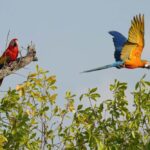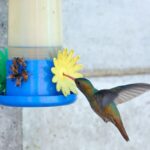Installing a bird feeder in your backyard is a good first step towards attracting them, but not all feeders are the same. Some feeders dispense all food types, others are limited to specific foods.
Suet, for example, can’t be served in a seed feeder, just like how nectar needs a hummingbird feeder.
So, what’s right for you? Time to take a look at feeders and food types to find out.
1. Platform Feeders

Also known as tray feeders or bird tables, platform feeders are the most basic type of feeder.
They consist of a flat platform (usually made from wood) on which the food is laid on. Sometimes, a small roof is added so the food stays dry during rain.
They are the most easily accessible bird feeders, and if you’re looking for a DIY project, they’re the easiest ones to make. You can serve any food on them, but they’re especially useful for serving fruit.
However, there are a few drawbacks to them. Firstly, since the platform is open, the wind can blow the food to the ground. This isn’t a problem for ground-foraging birds, but not all birds look for food on the ground.
Secondly, since birds will walk all over the platform, and they’re not the cleanest animals, you can count on them making a mess through defecation.
Platform feeders require the most cleaning out of all bird feeders for this reason. If you don’t clean them, the food gets mixed up with feces, and infectious diseases will spread among the birds.
On a positive note, you can fit a platform feeder anywhere you want. You can mount it on a pole, hang it from a branch, or put it on the ground.
If you use a thin, smooth, squirrel-proof pole, you’ll also prevent all the squirrels from getting to the food.
2. Seed Feeders
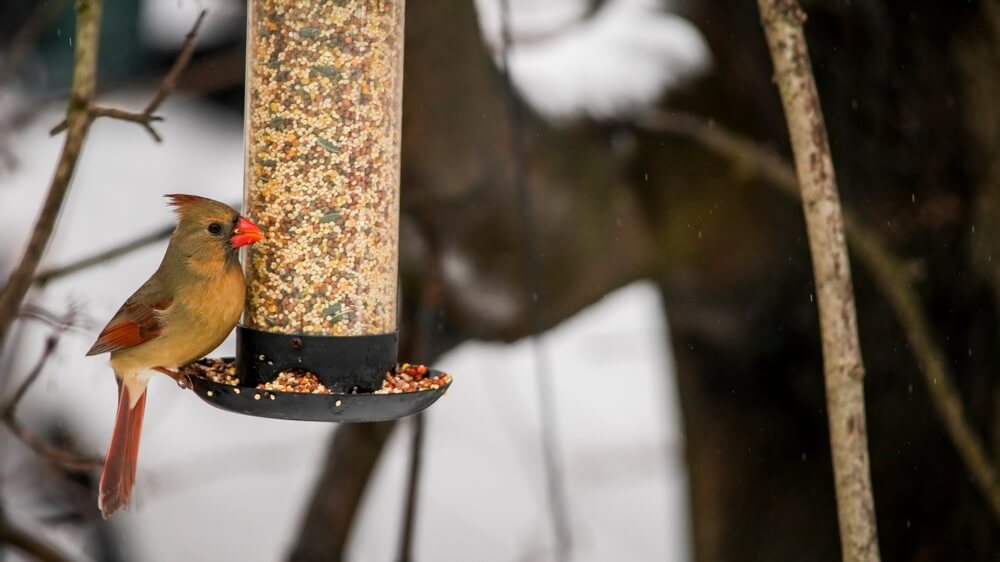
Among seed feeders, we have the large hopper, the small hopper, and tube feeders. Seed feeders usually have a metal mesh and/or transparent plastic around them to hold the seed in, but still allow the birds to see them.
The top is closed, otherwise, the birds would get in from that end and make a mess, while the bottom is open. As the birds eat the seeds that fall out through the bottom, the seeds from inside the feeder move towards the bottom and fall out.
You can make both hoppers and tube feeders on your own – all you need is some wood and a metal mesh.
Metal tube feeders that only use wood for the platform usually last longer than plastic feeders. They’re also more resistant to squirrels, which are the most common feeder-invading pest!
Some manufacturers include a pressure pad in the design of the platform. Since squirrels are heavier than birds that frequent seeders, they’ll activate the pressure pad and close the small gate that lets the food through.
Some seed feeders don’t have a bottom platform to which the seeds fall. Instead, they’re simple tube feeders with a mesh, closed on both sides.
The mesh is tight enough to prevent squirrels from pulling the seeds out, while birds don’t have a problem with it because of their thin beaks.
3. Suet Feeders
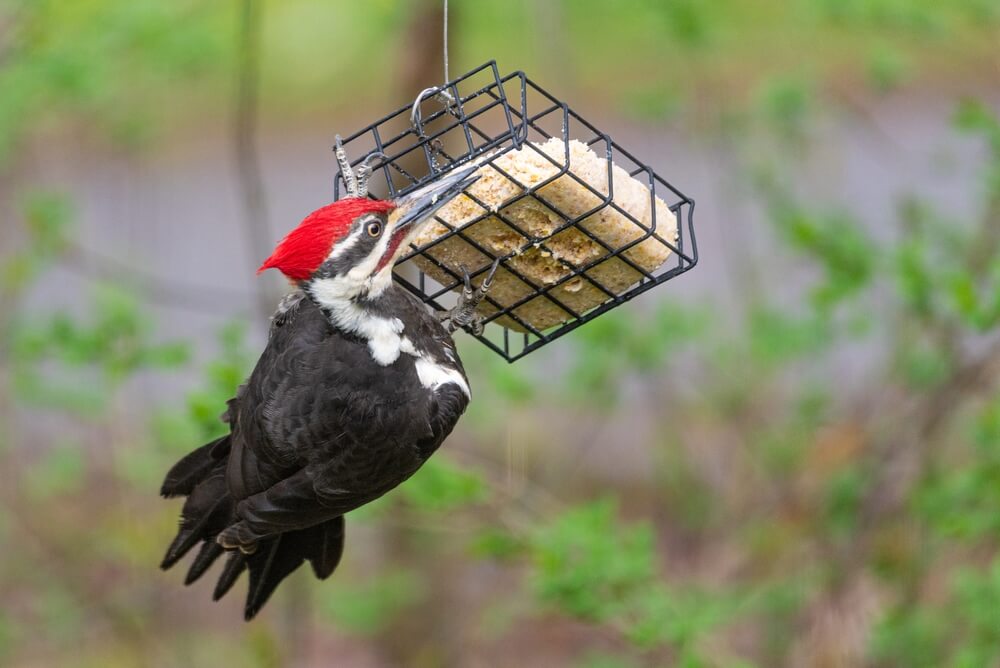
Suet feeders are small metal cages that contain a suet cake inside. They’re specifically made for suet cakes, as you can’t serve them any other way.
A suet cake is too big for a seed feeder, and if you put it on a platform feeder, the birds will knock it to the ground. It’s also possible that a single large bird will grab it and fly away with it.
The point of a suet feeder is to stop the birds from doing any of this and just pick out the suet bit by bit.
Suet feeders are usually hung from a branch and the food itself will attract all sorts of birds.
4. Hummingbird Feeders

These feeders are designed to provide a liquid solution (1 part white sugar and 4 parts water) to hummingbirds and orioles. As the name suggests, other birds won’t be as interested in this feeder as they don’t feed on nectar.
You usually can’t make your own hummingbird feeder, as they have to be watertight and are often cast from two interlocking pieces of plastic.
Many hummingbird feeders are painted red or orange to attract the birds, as they’re often feeding on nectar from orange and red flowers in the wild. The same can be said for oriole feeders, which are traditionally painted orange.
Since the solution in the feeder is so sweet, it will naturally attract ants and other insects. Applying petroleum jelly to the top of the feeder won’t harm the birds, and it might keep the ants away.
Most new hummingbird feeders have a cap on the top of the feeder. To refill, all you have to do is open the feeder and pour the solution in. Older feeders needed to be turned upside-down quickly, often resulting in pouring nectar all over.
5. Window Feeders
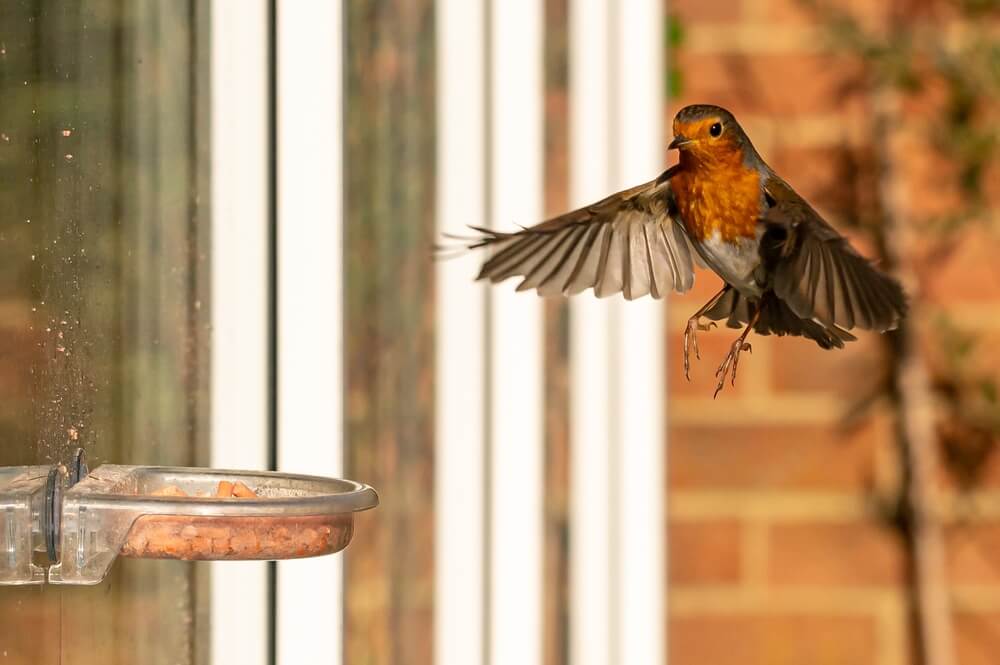
Finally, we have window feeders, which are attached to windows by suction cups. This way, the birds eat right in front of your window, providing you with an unobscured view of them.
Two things to keep in mind; firstly, birds often defecate as they eat, so you can count on the area under your window getting dirty.
Secondly, birds are clumsy and they’ll stand in the feeder as they eat, so you have to clean out the food daily for the sake of their health.


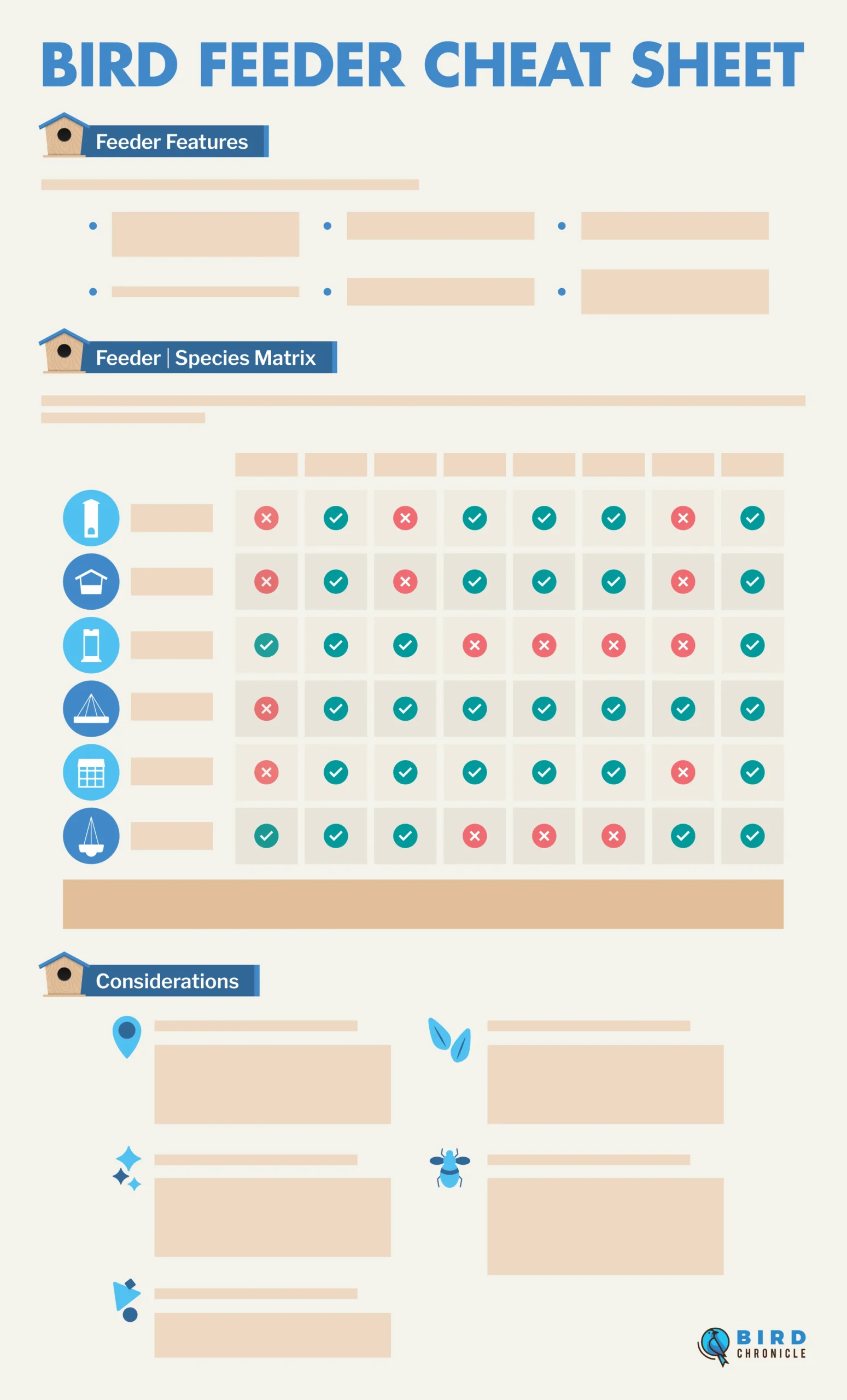



![Why Do Birds Throw Seeds Out Of A Feeder? [7 Reasons] Why Do Birds Throw Seeds Out Of A Feeder? [7 Reasons]](https://birdchronicle.com/wp-content/uploads/2022/08/northern-cardinal-bird-feeder.webp)



